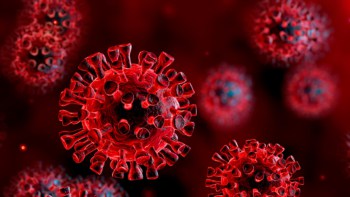
A new dialyzer made from 3D carbon foam pre-grafted with nanowires could more efficiently remove bacteria and other pathogens from blood than existing technologies. The device, which is inspired by the Venus flytrap, might be used to create a nanotechnology platform for making artificial kidneys in the future.
Bacteria in the bloodstream can cause serious, potentially life-threatening infectious diseases, such as sepsis. Broad-spectrum antibiotics are usually used to treat these diseases, but they are less effective than “blood-cleansing” therapeutics that target specific microbes or antibiotic-resistant pathogens. Such therapies include filtering blood using microfluidic devices and magnetic nanoparticles, but these techniques are not very efficient since bacteria can “fall off” the devices and particles due to the shearing force of the bloodstream.
Researchers led by Tie Wang of the Chinese Academy of Sciences in Beijing made their new dialyzer by grafting bendable polycrystalline nanowires containing ligand receptors on 3D carbon foam. The nanowires, which are straight and point outwards, act as “claws” when they sense targeted bacteria and then bend to trap these pathogens. This is just like the Venus flytrap that opens widely and snaps shut, trapping its prey.
97% capture efficiency
“These bendable nanowires simultaneously satisfy two requirements of an ideal dialyzer substrate,” explains Wang. “First, they hardly deform at high fluid flow velocities so are very sensitive o targeted microorganisms. Second, they can significantly bend at their tip under weak carbohydrate-protein forces to that immobilized bacteria cannot desorb – even in a fluid bloodstream.”
In experiments in a bloodstream with a velocity of 10 cm/s, the researchers measured that the devices were able to capture bacteria with an efficiency of 97%. To compare, devices made from carbon foam alone had a 10% capture efficiency, and unbendable single-crystalline nanowires on carbon foam a 40% capture efficiency.
Nano-biotechnology platform
“As well as bacteria, our proof-of-concept device might also be used to trap other microorganisms, such as viruses, and even circulating cancer cells,” Wang tells nanotechweb.org. “It might thus be used to create a nano-biotechnology platform for fabricating multifunctional artificial kidneys.”
There is still much work to do though to improve the nanowire dialyzer, he adds. “At the moment, it can only capture bacteria and cannot release them, so we will need to integrate a mechanical response into the device so that this can be done under fluid shear stress.”
The dialyzer is detailed in Nature Communications doi:10.1038/s41467-018-02879-9.



